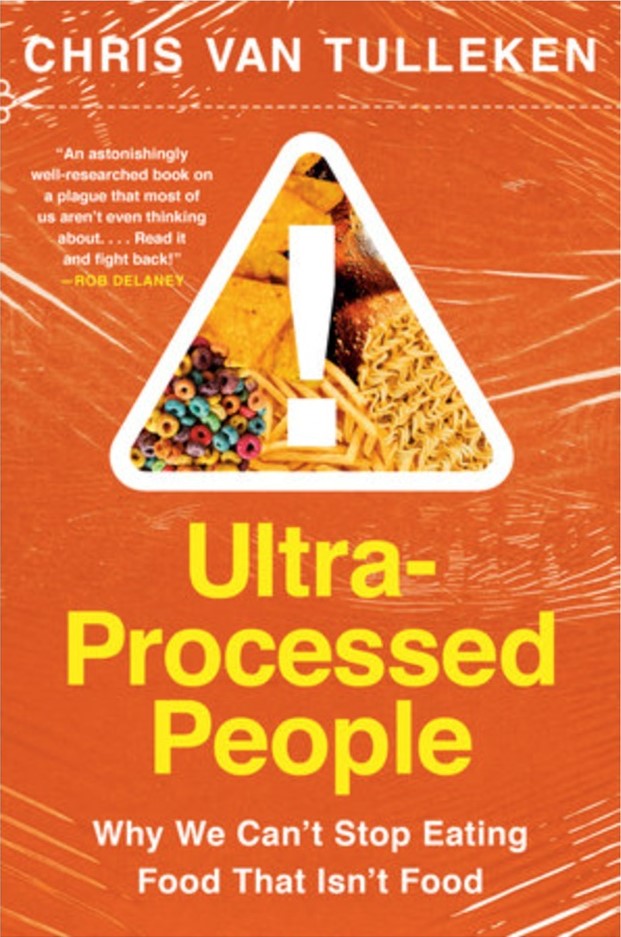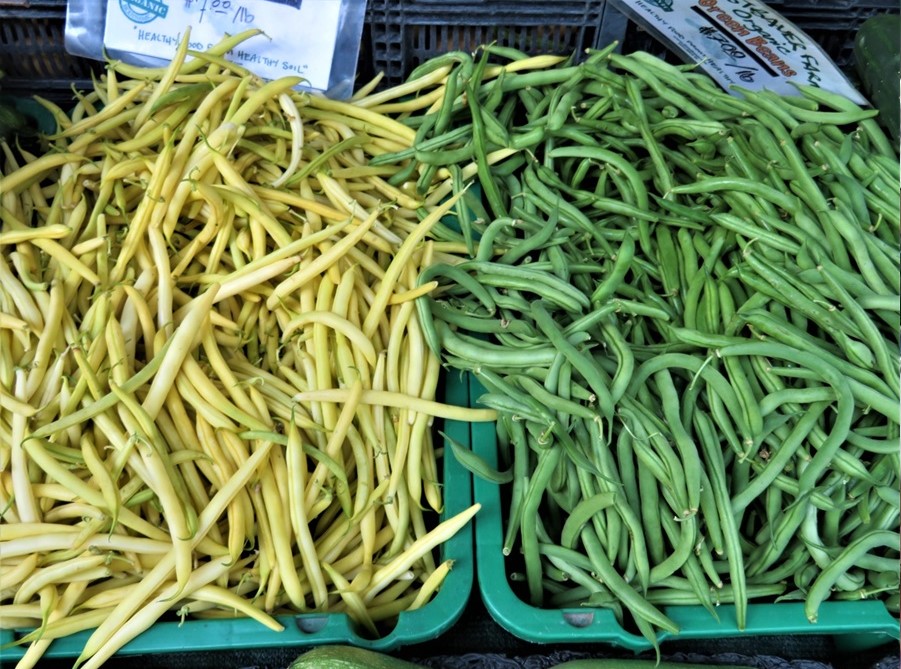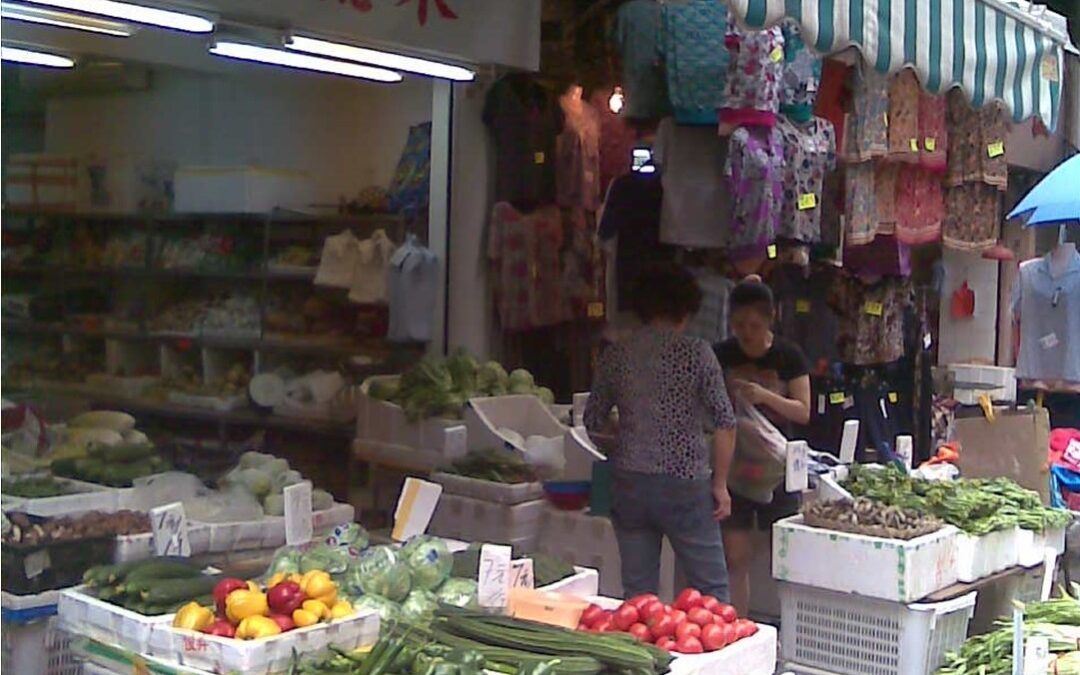When those Congressmen talk
of people who are counting
their last change for gas or eggs
choosing between cold and hunger
they snarl
Marge Piercy (2014).
Food Insecurity
When we speak of food security, we are really talking about food in-security and food insecurity is a sociopolitical issue, and as such, a social justice concern. Food insecurity is defined by the Community Food Centres Canada (CFCC) “…as having inadequate or insecure access to food due to financial constraints” (Leung, 2023). Food insecurity is most often correlated with social class, financial status, gender, and race.
Food insecurity has real effects on physical and psychological health and wellbeing. For example, as Sullivan and Hickel (2023) observe, “Malnutrition and poor health tend to limit childhood growth…”, and “As for the impact of capitalism on human welfare: data on wages, human height and mortality indicate that the rise and expansion of the capitalist world-system from circa 1500 caused a decline in nutritional standards and health outcomes” (p. 14). There is a longstanding political history associated with food insecurity, malnutrition, and wellbeing.
The story of the Nestle corporation further illustrates the politics of food insecurity. Nestle, headquartered in Switzerland, is the largest publicly owned food company in the world. According to the Nestle website, the company distributes over 2000 brands, including top-sellers such as Nespresso, KitKat and S. Pellegrino. Nestle sells products in 188 countries worldwide, with sales in 2022 of 94.4 billion (Swiss francs).
Reporting in The Financial Times, Evans (2021) wrote “The world’s largest food company, Nestle, has acknowledged that more than 60 per cent of its mainstream food and drinks products do not meet a ‘recognised definition of health’ and that ‘some of our categories and products will never be ‘healthy’ no matter how much we renovate’ ” Nestle acknowledges that it is working towards improving this poor nutritional history, in addition to decreasing greenhouse gas emissions and deforestation, and curtailing the use of plastic packaging by one-third by the year 2025 (Nestle Annual Review extract 2021).
Lack of access to good water is an issue for many Indigenous communities in Canada. “In Ontario, Canada, the town of Grand River, located on the Six Nations Reservation faces a lack of access to water while every day, Nestle extracts millions of litres of water from the Erwin Well that otherwise serves as a reliable source of freshwater to the Six Nations Reservation…Grand River residents complain that since Nestle began pumping, their water has become dirty and it smells even worse. In order to get clean water, residents have to fill buckets and jugs at community water sources managed by the Six Nations reservation. Ironically, some residents are even turning to bottled water from companies like Nestle.” McIntyre (2021)
In his book review of British doctor and medical journalist Chris van Tulleken’s (2023) Ultra-Processed People, Gopnik (2023) notes that “…the Nestle Corporation has brought its snacks, by boat to Indigenous peoples, with the predictable effect of making Amazonian kids prefer junk food to the ancient and healthy staples of roots and berries. ‘I have not found any evidence that there were children with diet-related diabetes in these parts of Brazil until enterprises like the Nestle boat,’ he writes. We are being purposefully addicted, and on a planetary scale, he concludes. Ultra-processed foodstuffs will alter our children’s brains and enslave them to a global capitalist economy”.

Reviewing van Tulleken’s book in The New York Times, Jacob E. Gersen (2023), professor of law at Harvard Law School and director of the Food Law Lab pointed out that “in van Tulleken’s telling, obesity is not caused by the usual suspects – sugar, salt, fat or lack of exercise – but by synthetics, chemicals and stabilizers in ultra-processed foods. These short-circuit our evolved use of taste, smell, color and texture to guide dietary choice, tricking us into unhealthy and addictive eating choices and subsequent weight gain”.
On a hopeful note, “Nestle, Mars Inc and 3M, which source pulp and paper in British Columbia, have struck a partnership with the Tsay Keh Dene First Nation people, supporting their efforts to protect key parcels of land with cultural significance”.
Food In-security: Canadian Context
Food insecurity is a Canadian issue. Researchers at the University of Toronto estimate that “In 2022, 18.4% of people in the ten provinces lived in a food-insecure household. That amounts to 6.9 million people, including almost 1.8 million children, living in households that struggled to afford the food they need” (PROOF, 2023). And this from Tarasuk et al (2022): “Household food insecurity, inadequate or insecure access to food due to financial constraints, is a serious population health problem in Canada, linked to poorer mental health, high rates of infections and non-communicable diseases and injuries, increased health care utilization, and premature mortality”. According to a Food Banks Canada report (2023) “…two in five Canadians are reporting that they feel worse off than they did a year ago” (p.21), while almost half of B.C. residents surveyed reported they are feeling worse off.
A research study in the province of Ontario, conducted by Andersen et al (2023) found that “Children and adolescents living in a food-insecure household have greater use of health services for mental or substance use disorders than those living in households without food insecurity”; while further noting “Children and adolescents from food-insecure households had a 55% higher prevalence of outpatient visits for mental or substance use disorders…” and …”children and adolescents from food-insecure households had a 74% higher prevalence of acute care visits in the previous year.”
For an increasingly significant number of Canadians, financial constraints have forced them to access local food banks. Ripley (2023) notes “By the time someone in a food-insecure household visits a food bank, they have often exhausted other means of staying financially afloat, including asking loved ones for help, skipping meals, missing bill payments, and stretching out medications”.
Ripley further observes, “People with primary incomes from provincial social assistance have incomes far below the poverty line and make up almost half of food bank users”. “Food bank use in Canada reached its highest level in history in March 2022. At nearly 1.5 million visits, this represents a 15% increase since 2021 and a 35% increase since 2019”. Ripley concludes her discussion stating, “ ‘Food insecurity is a policy decision’ (Li 2021)’. We must shift our understanding of food insecurity and demand policy action from governments, because food banks cannot solve the problem alone”.
In British Columbia “…40% of residents spend more than 30% of their monthly income on housing costs. With so much money going towards housing, over 70% of food bank clients in British Columbia are renters” (Food Banks Canada. Poverty Report Cards (2023), p. 28).
Korzun, MacDonald and Appavoo (2023) have this to say, “…people with low incomes are increasingly identifying systemic issues, like racism and colonialism, as main barriers to achieving food security. Even with low food costs, racialized people face numerous barriers in achieving food security”. These researchers observe that “In 2022, Canada saw the highest rate of food inflation in decades. Although the rate of increase is slowing, Canadian families are estimated to pay up to $1,065 more for food in 2023”.
Indigenous Communities and Food In-security
Not unexpectedly, food insecurity, and general health ramifications associated with poor diet impact Indigenous persons and communities in more substantial ways. Many Indigenous communities have inadequate access to nutritional food sources which contributes to obesity, diabetes, hampered physical growth, dental deterioration, and mortality rates well below the national average. The link between marginalization, impoverishment and food insecurity is clear, along with their direct connection to systemic racism and colonialism. Again, food insecurity is a social justice issue.
Korzun, MacDonald and Apparoo (2023) note, “According to the last census, 18.8 per cent of Indigenous people live in a low-income household, compared to 7.9 per cent of the non-Indigenous population. Indigenous communities in Canada face food insecurity two to five times more than other Canadians”.
“The First Nations Regional Health Survey reported that food insecurity was experienced by 54% of First Nations individuals living on-reserve…” (pp. 553-554). “Food insecurity is linked to inadequate intakes of several nutrients, the inadequacy of which could explain in part the health inequities experienced by Indigenous populations…[And] First Nations Peoples exhibit a high prevalence of nutrition-related chronic disease…such as obesity and type 2 diabetes…Prevalence of obesity in First Nations peoples is reaching alarming levels at 50%, and type 2 diabetes is rampant with a prevalence of 19%, both double that of other Canadians…” (p. 554).
A recent (2022) report by the BC Centre for Disease Control (2022) states that “Colonial systems need to be restructured to better support Indigenous food sovereignty and ensure that policy is grounded in practice. This work is the responsibility of non-Indigenous people – an ongoing process of unlearning current ways of thinking and re-learning based on the values and practices that guide Indigenous Peoples’ relationships to the Land and each other”. As further noted in the report, “Food insecurity is most acutely felt by those who experience the negative impacts of structural inequities, such as discrimination and ongoing colonial practices”.
Indigenous Solutions
In Vancouver, B.C., Dawn Morrison, an Indigenous woman and founder of the Working Group on Indigenous Food Sovereignty (WGIFS) is involved with a number of initiatives “…to promote strategies and methods from a variety of Indigenous nations to help communities achieve self-sufficiency when it comes to food production” (CBC News, August 24, 2023). For example, a garden project in Vancouver’s Strathcona Park, “…a place Morrison says is culturally significant for several reasons. Long ago, it was a huge marshland that provided Coast Salish foods, medicines and fish-bearing streams. Today, it’s situated beside an industrial hub for food distribution” where “…about 40 to 60 per cent of all the food that goes in and gets transported across B.C. comes through this corridor on Malkin Avenue”.

Photo: Bill Stovin
This garden project, known as the “Indigenous Food Sovereignty Circle” includes “…traditional foods and plants from a multitude of Indigenous cultures. Examples include rosehips, pumpkins and tomatoes, which are historically important to Coast Salish cultures.”.
Closer to Home
Many of us take access to food for granted. We have markets close by, and we have vehicles to transport us. Where I live on B.C.’s Sunshine Coast, it is a forty minute ferry journey into Vancouver where a wide range of grocery stores and markets offer fresh fruit, vegetables, and non-processed foods. For the elderly, the infirm, the impoverished, and persons lacking transportation this is difficult.. There are several well-established organic farms nearby selling their produce, but a vehicle is required to access these farms.

Photo: Bill Stovin
Bronwyn Beairsto (2022) writes in the Coast Reporter on the Sunshine Coast, “Across the Coast, food bank demand is rising”. According to Chris Hergesheimer, the lead food programmer for Sunshine Coast Community Services Society, “Rising food prices, and rent and cost of childcare and labour shortages, and things like that are all going to contribute…We’re seeing people having to cut into their food budget to meet all their other basic needs”.
Pamela McElheran (2023) Coordinator of St. Bart’s Food Bank on the Sunshine Coast, estimates “Thirty per cent of all food bank users in B.C. are children (foodbanksbc.com). The number of seniors (65+ years) accessing food banks in B.C. has increased by 20 per cent over the past two years”.
Aware of the importance of nutritional, non-processed, food for brain development, many schools offer nutritional meals to students who otherwise may not receive such. For example, at Gibson’s Elphinstone Secondary School, it is estimated that about seventeen per cent of high school students access the breakfast and lunch programs supported and offered by the school. The cafeteria offers nutritional foods, including some vegan and gluten free options.
In conclusion, structural political change is required in order to effectively eradicate food insecurity and its myriad of health and wellness effects. The correlations between political and economic systems and food insecurity, access to clean drinking water and sanitation, timely medical care, health, disease management, infant mortality, longevity and wellbeing are well established.
A study by Cereseto and Waitzkin (1986) found that “…socialist countries performed better on life expectancy, mean years of schooling, and other social indicators than their capitalist counterparts at a similar level of economic development….”; concluding, “Poverty alleviation and gains in human health have historically been linked to socialist political movements and public action, not to capitalism”.
The authors concluded “Our findings indicate that countries with socialist political-economic systems can make great strides toward meeting basic human needs, even without extensive economic resources. When much of the world’s population suffers from disease, early death, malnutrition, and illiteracy, these observations take on a meaning that goes beyond cold statistics” (p. 665). In an interview with The Los Angeles Times the authors “…acknowledged that socialist countries have problems in other areas…’But they don’t have starvation.’ said Cereseto, while Waitzkin added, that “’even under conditions of poverty, a national coherent plan to deal with public health and education can make a marked impact’” (Dodson, 1986).
In the year 2023 one would imagine that access to nutritional and affordable food would be accepted as a human right. Unfortunately, and shamefully, that is not the case. In a country such as Canada, we must continue to strive towards a socially just state in which food security exists for all.
 Colin James Sanders PhD, lives with his partner Gail and their creature companions on the unceded traditional lands of the Skwxwú7mesh Úxwumixw and the shíshálh Nation on B.C.’s Sunshine Coast.
Colin James Sanders PhD, lives with his partner Gail and their creature companions on the unceded traditional lands of the Skwxwú7mesh Úxwumixw and the shíshálh Nation on B.C.’s Sunshine Coast.
In addition to learning from his grandchildren, reading, writing, painting, and travelling, Colin is a member of the Editorial Board of The GTEC Reader.
References
Anderson, K.K., Clemens, K.K., Britney, L., Shang, L., Comeau, J., Tarasuk, V., and Shariff, S. Z. (2023). Household food insecurity and health service use for mental and substance use disorders among children and adolescents in Ontario, Canada. Canadian Medical Association Journal, July 24, 2023. DOI: https://doi.org/10. 1503/cmaj.230332
Batel, M, Hing Man Chan, Karen Fediuk, Amy Ing, Peter R.
Berti, Genevieve Mercille, Tonio Sadik and Louise Johnson-Down. (2021). First Nations households living on-reserve experience food insecurity: prevalence and predictors among ninety-two first Nations communities across Canada. Canadian Journal of Public Health 112 (Suppl 1.): 552-563. https:/doi.org/10.17269/s4 1997-021-00491-x
Cereseto, S., & Waitzkin, Ho. (1986). Economic Development, Political-economic System, and the Physical Quality of Life. American Journal of Public Health, June, Vol. 76, No. 6.
Dodson, M. Quality of Life Higher in Socialist Nations, Study Says. Los Angeles Times, June 7, 1986.
FoodBanks Canada. Poverty Report Cards. 2023.
Gersen, J. E. If We Are What We Eat, We Don’t Know Who We Are. The New York Times July 7, 2023.
Gopnik. A (2023). The Perils of Highly Processed Foods. The New Yorker. July 24, 2023.
BC Centre for Disease Control. (2022). Defining food security and food insecurity. Vancouver, BC. BCCDC, Population Public Health. http://www.bccdc.ca/our-services/programs/food-security#Reports–&–resources.
Korzun, M., MacDonald, A.J., & Appavoo, D. The True Cost of Food: High Grocery Prices Are Not the Root Issue. Broadview Magazine, July 12, 2023.
Leung, W. Food insecurity is hurting Canadians’ physical and mental health, social life, and ability to find work. The Globe & Mail, September 29, 2020.
McIntyre, L. (2023). Tackling household food insecurity to protect the mental health of children and youth in Canada. Canadian Medical Association Journal. July 24, 2023. DOI: https://doi.org/10.1503/cmaj.230849
McElheran, P. How to help on the Sunshine Coast in honour of World Food Day. Coast Reporter, October 17, 2022. https://www.coastreporter.net/in-the-community/how-to-help-on-the-sunshine-coast-Nestle Annual Review extract 2021. https://www.nestle.com/sites/default/files/2022-03/nestle-creating-shared-value-summary-report-2021-en.pdf
Piper, D. CBC News August 24, 2023. How Indigenous communities can establish food security in a changing climate. https://www.cbc.ca/news/science/what-on-earth-indigenous-food-sovereignty-1.6946580.
Piercy, M. (2014). “Who has little, let them have less”.
The Monthly Review.
PROOF: Food Insecurity Research Branch. University of Toronto. New data on household food insecurity in 2022 May 2, 2023
Ripley, A. 2023). Household food insecurity: it’s not just about food. Canadian Public Health Association, January 13, 2023. https://www.cpha.ca/household-food-insecurity-its-not -just-about-food
Sullivan, D., & Hickel, J. (2023). Capitalism and extreme poverty: A global analysis of real wages, human height, and mortality since the long 16th century. World Development, Vol. 161,
Tarasuk, V., St-Germain, A-A. F., Li, T. (2022). Moment of reckoning for household insecurity monitoring in Canada. Health Promotion and Chronic Disease Prevention in Canada, Vol. 42, No 10, October 2022. https://doi.org/10.24095/hpcdp.42.10.04


